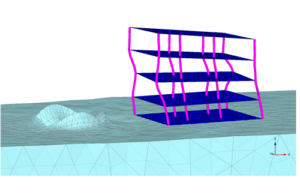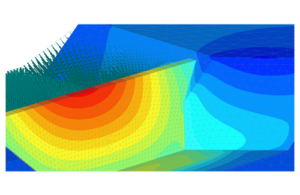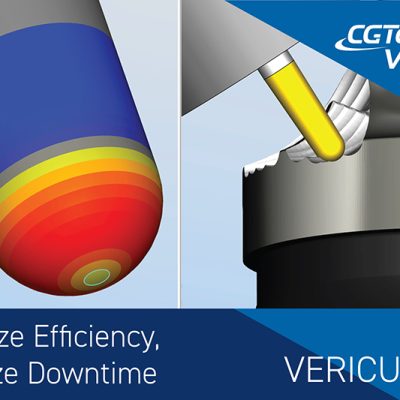Description
KEY POINTS OF PLAXIS 3D
- user-friendly interface (Windows©), for data input, stages definition and results analysis.
- fully automatic mesh generation.
- full set of material behaviour for soils (linear elastic, Mohr-Coulomb, Hardening Soil, Soft Soil, user-defined soil models…).
- groundwater flow and consolisation analysis.
- structural elements (plates, geogrids and anchors) and soil-structure interaction.
- safety factor analysis (phi/c reduction).
 Dynamics : soil and structures are often not only subjected to static loads due to construction in and on the ground surface but also to dynamic loads. When loads are powerful, like for example earthquakes, they may cause severe damages. In urban areas, vibrations can be generated due to pile driving, vehicle movement, heavy machinery or train travel. With the 3D Dynamics module Plaxis 3D can analyse the effects of vibrations in the soil.
Dynamics : soil and structures are often not only subjected to static loads due to construction in and on the ground surface but also to dynamic loads. When loads are powerful, like for example earthquakes, they may cause severe damages. In urban areas, vibrations can be generated due to pile driving, vehicle movement, heavy machinery or train travel. With the 3D Dynamics module Plaxis 3D can analyse the effects of vibrations in the soil.
 Plaxflow : users can assign time dependant variation or fluxes to water levels, model boundaries, or soil boundaries to simulate various complex hydrological conditions. The input of the time dependant properties are based on harmonic, linear, or table functions. This allows the modelling of seasonal variations of river water level behind embankments and their effect on the overall slope stability. Precipitation, wells and drains can be included in the model, allowing pumping tests or other hydrological applications to be modelled.
Plaxflow : users can assign time dependant variation or fluxes to water levels, model boundaries, or soil boundaries to simulate various complex hydrological conditions. The input of the time dependant properties are based on harmonic, linear, or table functions. This allows the modelling of seasonal variations of river water level behind embankments and their effect on the overall slope stability. Precipitation, wells and drains can be included in the model, allowing pumping tests or other hydrological applications to be modelled.
VIDEO : Workflow in PLAXIS 3D.
VIDEO : Importing surfaces into PLAXIS 3D.
VIDEO : Intersecting and combining geometries in PLAXIS 3D.
VIDEO : Adaptation of a Paris metro station (Terrasol modeling in PLAXIS 3D).


 Dynamics : soil and structures are often not only subjected to static loads due to construction in and on the ground surface but also to dynamic loads. When loads are powerful, like for example earthquakes, they may cause severe damages. In urban areas, vibrations can be generated due to pile driving, vehicle movement, heavy machinery or train travel. With the 3D Dynamics module Plaxis 3D can analyse the effects of vibrations in the soil.
Dynamics : soil and structures are often not only subjected to static loads due to construction in and on the ground surface but also to dynamic loads. When loads are powerful, like for example earthquakes, they may cause severe damages. In urban areas, vibrations can be generated due to pile driving, vehicle movement, heavy machinery or train travel. With the 3D Dynamics module Plaxis 3D can analyse the effects of vibrations in the soil. Plaxflow : users can assign time dependant variation or fluxes to water levels, model boundaries, or soil boundaries to simulate various complex hydrological conditions. The input of the time dependant properties are based on harmonic, linear, or table functions. This allows the modelling of seasonal variations of river water level behind embankments and their effect on the overall slope stability. Precipitation, wells and drains can be included in the model, allowing pumping tests or other hydrological applications to be modelled.
Plaxflow : users can assign time dependant variation or fluxes to water levels, model boundaries, or soil boundaries to simulate various complex hydrological conditions. The input of the time dependant properties are based on harmonic, linear, or table functions. This allows the modelling of seasonal variations of river water level behind embankments and their effect on the overall slope stability. Precipitation, wells and drains can be included in the model, allowing pumping tests or other hydrological applications to be modelled.












Reviews
There are no reviews yet.